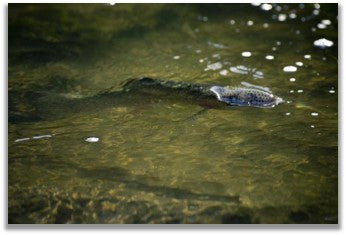
Know When to Fish Dry Midge Emerger Patterns

It's OK. You're in a safe place and can admit this has happened to you as well.
It's a frustration shared by every fly fisher. We are on the water and our heart skips a beat as we see trout fins and snout start to roll through the surface of the water. Our first inclination is to tie on a dry fly, so we leaf through our fly boxes and offer the trout one dry pattern after another all to no avail! "WHY DO THESE FISH KEEP REFUSING MY FLIES WHEN THEY ARE CLEARLY FEEDING ON DRIES!" we scream at the sky. Before you throw your fly rod in the river and give up fly fishing, slow down and take a moment to observe: what you might actually be witnessing is a midge emerger feeding frenzy!
Midges on a whole are SMALL, I'm talking size 18 to 26 hook small, and they STRUGGLE to get out of the water. Just like the head of bubbles on a freshly poured pint of beer will collect on the surface of the water, emerging midges will stack up at the surface of the water as they struggle to break through the surface tension. The result during every midge hatch then is a concentration of food at the surface of the water during EVERY midge hatch.
When you prematurely offer trout a dry fly on top of the water as they are feeding on emergers, it's like a waiter at a restaurant offering you a brownie for dessertjust as you start cutting into a prime rib! The emergers are the MAIN COURSE!
It's time to tie on dry emerging midge patterns trapped in the surface of the water when you see:
- Trout displacing a "V" of water as they cruise just under the surface
- The tips of the trout's dorsal or tail (caudal) clipping through the surface of the water
- The snout of the trout rolling through the surface of the water almost like a dolphin
Don't get ahead of yourself and tie on a dry fly! Midge emergers are on the menu just beneath the surface of the water and these are the best patterns to help you match the hatch!


